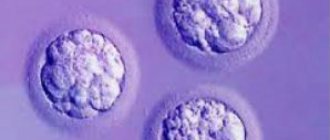How common is toxicosis during pregnancy?
This ailment occurs during most pregnancies. It affects 3 out of 4 women, and in only one of them the symptoms are limited to nausea; in the other two, vomiting comes along with it.
Many women who suffered during their first pregnancy are very afraid to meet him again. This is possible, but not at all necessary. The presence or absence of this disease and how severe it was does not help in any way to predict what will happen during the next pregnancy.
Diagnosis and what helps in the treatment of toxicosis
As part of the examination, the woman will be prescribed a general blood and urine test, blood biochemistry, ECG, ultrasound examination of the pelvic organs, ultrasound of the kidneys and pancreas. In some cases, consultation with a neurologist, gastroenterologist and endocrinologist may be required.
In case of complicated toxicosis, it is extremely important for a pregnant woman to monitor blood pressure and notify the doctor of any changes. Women with a sudden weakening of the main symptoms of pregnancy require special attention.
During the consultation, the doctor will tell you how to get rid of signs of toxicosis during the day and what is better to use - medications or traditional medicine recipes.
What are the causes of toxicosis?
Nobody knows for sure. Some doctors believe that it is a consequence of significant changes in hormonal levels in pregnant women, and list hCG (human chorionic gonadotropin), estradiol, and progesterone as the culprits of toxicosis. Others consider it a psychological condition, something like neurosis, and prove their point of view by the fact that toxicosis during pregnancy often occurs against the background of a woman’s stressful state. It can be caused by many factors, including fear of the first birth. We talk about this in detail here.
There is a theory that toxicosis is not a disease at all, but, on the contrary, an evolutionary advantage. And really, when does it start? In the early stages, i.e. precisely when the fetus is most vulnerable to toxins. At the same time, the pregnant woman’s body reacts to the most dangerous odors - meat, fish (potential sources of parasites, harmful bacteria), alcohol, cigarette smoke, other sharp-smelling foods, household chemicals, etc. It turns out that with the help of toxicosis, the body tells you that, we hope, you already understand perfectly well: during pregnancy, especially in the first trimester, you need to very carefully monitor your diet and health.
Second trimester of pregnancy
With the onset of the fourth month of pregnancy
the risk of complications is significantly reduced. Of all cases of spontaneous abortion, less than 25% occur during this period - these are so-called late miscarriages (see below). Although the development of an ectopic pregnancy may still continue in the second trimester, in the vast majority of cases it is still detected (and terminated) in the first three months.
Well-being, changes in the body
Around the start of the second trimester, your waist will begin to expand rapidly, and the day will come when you will not be able to squeeze into many of the same outfits. It is at this stage that pregnancy becomes noticeable to others - no one will mistakenly consider you just fat. At this stage, a restructuring of the entire circulatory system occurs. The volume of circulating blood increases, the bone marrow begins to produce more blood cells, the heart slightly changes position and slightly increases in size. As your abdominal volume increases, you may notice the appearance of stretch marks
- pinkish or reddish stripes on the abdomen.
At this stage, most women no longer experience nausea
, however, the feeling of lightheadedness in the morning sometimes persists in the second and even during the third trimester. But even if your morning sickness doesn't completely go away, you'll still feel much better. You may notice an increase in salivation, which will sometimes be associated with a feeling of lightheadedness and will almost always be worse with nausea. Sweating may increase.
It happens that the skin becomes drier. Other problems, such as anemia
caused by iron deficiency, or other problems - each woman has her own.
During the second trimester (around week 20 if you are giving birth for the first time, and after week 16 if this is not your first), you will begin to feel fetal movements
.
In mid-pregnancy, breasts
completely restructured to fulfill their original mission. Around the nineteenth to twentieth week, yellowish discharge from the nipples may appear, the so-called colostrum - immature milk intended for feeding the baby in the first time after birth, until full breast milk begins to be produced.
constipation increases
.
As the fetus grows in the uterus, the stomach is pressed against the diaphragm. As a result, emptying it may be difficult. A balanced, high-fiber diet can help resolve this issue (discuss this with your doctor and/or nutritionist). However, even following a diet at this stage, alas, does not always save you from hemorrhoids
: this is due to increased pressure on the abdominal organs and dilation of the rectal veins.
As a preventative measure, it may be advisable to raise your legs at the time of bowel movement - for example, put them on a stool. Among medicines, Vaseline and oil solutions of vitamin E are excellent. Unfortunately, pregnancy predisposes to heartburn
. It is most common in the last trimester, but can begin at any time during the second trimester and continue until the very end of pregnancy. Heartburn is a burning sensation behind the breastbone. It is caused by the action of progesterone, which relaxes the muscles that ensure the flow of food from the esophagus to the stomach. In this regard, the contents of the stomach flow back into the esophagus. The acid released in the stomach during digestion causes irritation of the walls of the esophagus and a burning sensation. In a word, the stomach does not work as it should. Here are some recommendations to solve this problem:
- Avoid fatty foods, soda, processed meats and sandwiches.
- Eat slowly and chew food thoroughly before swallowing. This will promote better functioning of salivary enzymes, and greater grinding of food will take some of the load off the stomach.
- Try not to eat late at night (after 8).
- Try not to drink while eating. By not “diluted” solids with liquid, you will likely eat more slowly and swallow less air.
- Avoid coffee, strong tea, smoking, and various acid neutralizers that contain soda.
Due to an increase in blood volume by approximately 40% and an increase in hormone levels, isolated nosebleeds
. Don't worry about this. Lubricate your nostrils with Vaseline - this will help prevent the mucous membrane from drying out, which causes bleeding.
Around this period, slight milky-white, painless vaginal discharge
with a faint odor, intensifying as pregnancy progresses.
This phenomenon is associated with increased hormonal activity. You may even have to use daytime pads for moderate flow. It is also worth paying special attention to maintaining vaginal hygiene rules. Be prepared for vaginal yeast infections
, which can plague you throughout your pregnancy.
The increase in estrogen in the blood during pregnancy causes the body to retain more fluid than usual to nourish the placenta and produce enough milk. This can cause swollen ankles, bloated fingers (by the way, this is the time to stop wearing rings) and general swelling
of the whole body.
Depending on the severity of the swelling, a variety of other problems may develop. One of them is the so-called carpal tunnel syndrome
: excess fluid accumulates in the wrists and blocks the nerve located there that provides sensation in the fingers. In this case, a tingling or burning sensation is felt in the fingers. Over time, this usually goes away without medical intervention, and if the problem persists after childbirth, it can be corrected with simple surgery.
Changes in the condition of the veins
- a normal phenomenon during pregnancy. The range of these changes is very wide. In some women, the thighs from top to bottom are “crossed out” with thin, gossamer-like, reddish lines - this is the so-called superficial varicose veins. Similar lines may appear on the chest. Both are associated with hormonal changes. After childbirth, these lines may fade or disappear completely. If this does not happen, you can get rid of them using simple cosmetic procedures.
As for varicose veins, this disease is very often hereditary. Veins carry blood from all extremities to the heart. They are equipped with valves that prevent blood from flowing back. When the veins carry blood from the legs, the valves are forced to “fight” gravity. Sometimes venous valves become defective or don't work at all. This causes blood to pool in areas where gravity is strongest: the legs, rectum, or even the vagina. Such places where blood accumulates in the legs are clearly visible, they look like lumps and are often painful. Well, the increased volume of circulating blood and the increase in progesterone content, unfortunately, only aggravate an already serious situation, and sometimes provoke it in women who have not previously suffered from varicose veins.
Sometimes the only sign of varicose veins is the appearance of pale bluish lines in places where blood has stagnated. However, varicose veins can appear unexpectedly anywhere from the ankles to the vagina. In more serious cases, thrombophlebitis may develop, a disease whose name translates as “inflammation of a vein due to a blood clot.” The development of a clot in a vein is known as venous thrombosis. Blood clots usually occur during the postpartum period, but varicose veins can develop at any stage of pregnancy.
Treatment of varicose veins is closely related to prevention: try to maintain an optimal weight for your stage of pregnancy (excess weight can lead to increased varicose veins); when lying down, try to raise your legs above the level of your body (put a pillow under them to cause blood flow); wear supportive tights (promote blood circulation); refuse tight clothes with tight belts, tight shoes, garters, belts, etc.; and don't forget about daily walks (twenty to thirty minutes a day).
Possible complications
Lack of space does not allow me to list all the complications encountered (for example, problems associated with the placenta: thickening of the placenta, its premature ripening, abruption, etc.), so I will focus only on the most common problems of the average pregnancy and pregnancy associated with an increased risk.
Hypertension and diabetes
The presence of diseases such as hypertension or diabetes in your family makes it possible to “suspect” you of a hereditary predisposition to these ailments. In this case, constant medical monitoring of the presence of symptoms of these diseases is especially important. However, even if you have no reason to fear hereditary diabetes, in the second trimester it is time to start undergoing mandatory prenatal tests that regularly monitor blood sugar levels, since so-called pregnancy diabetes often develops at this stage. It’s time for you to take other tests (their list will depend on your age and membership in any risk group).
Bleeding
Light or spotting bleeding in the second trimester is often caused by increased sensitivity of the cervix, which may be irritated during a vaginal examination or during sexual intercourse. Any bleeding that occurs should be reported to your doctor immediately.
Late miscarriage
Spontaneous abortion between the twelfth and twentieth weeks of pregnancy is known as late miscarriage. It is characterized by the same symptoms as various types of first trimester abortion. In many cases, the causes of this condition are rooted in the “improper behavior” of the cervix: the cervix opens prematurely and cannot hold the fetus. If this process is “captured” at the very beginning, stitches can be placed on the cervix, thus preserving the pregnancy. Subsequently, at the time of birth, the sutures are removed and do not interfere with the natural course of labor.
Premature birth
Premature birth can occur between the twentieth and thirty-seventh week. Symptoms of premature labor: contractions accompanied by bleeding, pain in the lower abdomen (similar to those that occur during menstruation), sometimes diarrhea, nausea or indigestion. This situation requires emergency medical intervention: if possible, the progression of the labor process should be stopped. If preterm labor cannot be stopped, the baby born prematurely will need to undergo intensive treatment in a neonatal unit.
However, knowing and remembering the possible complications of pregnancy (all kinds of excesses should not take you by surprise), do not cross the line between prudence and suspiciousness. After all, the second trimester is usually the most wonderful time of pregnancy. You no longer just know that you are carrying a new life “under your heart,” but you also clearly feel it inside yourself: the baby has already begun to move. The anxieties associated with childbirth are still far away, but your health has improved significantly compared to the beginning of pregnancy. You bask in the rays of universal respect and even admiration: a noticeably rounded belly no longer leaves any doubt about the true reasons for the change in your size. Only very callous or very stupid people are blind to the special, unique charm of a pregnant woman. The joys of motherhood are yet to come, but for now, enjoy this blessed “respite” - the second trimester of pregnancy!
M. Sarah Rosenthal
Chapter from the book “Gynecology” (M. Sara Rosenthal, Gynecological Sourcebook. - NTC/Contemporary, 1997). Published with abbreviations.
Article provided by the magazine “9 Months”
Make an appointment with specialists by calling a single call center:
+7(495)636-29-46 (metro stations “Schukinskaya” and “Street 1905 Goda”). You can also make an appointment with a doctor on our website, we will call you back!
What are the symptoms of toxicosis?
Nausea and vomiting, if you're lucky - just nausea. Sometimes attacks of malaise occur for no apparent reason, but most often they are a reaction to pungent smells and tastes. Other symptoms, such as abdominal pain, headache, fever, are not typical for toxicosis and are rare. If you have diarrhea along with vomiting, most likely it is just poisoning.
Read about other changes in the female body during pregnancy here.
How severe is toxicosis during pregnancy?
Based on the severity of symptoms, there are two types of toxicosis in early pregnancy. A mild or moderate form is when vomiting occurs no more than 5 times a day, and the woman does not lose or almost does not lose weight. It doesn’t sound very easy, but it’s still just flowers
The severe degree is called Hyperemesis gravidarum in Latin, and in Russian - excessive vomiting of pregnant women. This form is characterized by uncontrolled vomiting, leading to dehydration, weight loss and ketosis (carbohydrate starvation of cells with the formation of acetone and other harmful substances in the liver). Hyperemesis gravidarum is not a very common occurrence, we wish you did not have to become familiar with it. However, you should not completely discount it: excessive vomiting occurs in 0.3–2.0% of pregnant women and causes the following unpleasant consequences:
- Losing more than 5% of weight.
- Dehydration, constipation.
- Nutrient deficiency, primarily vitamins B1, B6, B12.
- Metabolic disorders.
- Physical and psychological stress.
- Significant deterioration in the quality of life during pregnancy, problems at home and at work.
Modern medicine can combat this condition, but previously it led to serious consequences, including the death of the expectant mother. For example, all the facts indicate that the famous British writer of the 19th century, Charlotte Bronte, author of the famous novel “Jane Eyre,” died in the fourth month of pregnancy precisely from complications of severe toxicosis. At the same time, the Duchess of Cambridge Catherine Middleton, although she suffered from Hyperemesis gravidarum in the early stages during all three pregnancies, successfully went through it and pleases us with photographs with the princess and two princes.
When should you see a doctor?
Pregnant women can cope with ordinary nausea that occurs at night on their own, at home; the woman does not need to be hospitalized. Calling a doctor or ambulance is required if the clinical picture additionally includes:
- increase in blood pressure above 140/90 mm Hg. Art.;
- uncontrollable frequent vomiting that does not respond to standard treatment;
- fever;
- stomach ache;
- disturbance of consciousness;
- severe swelling of the arms, legs, face;
- weight loss of 2 kg or more.
During the diagnostic process, the development of intestinal infection, food poisoning, and preeclampsia will be confirmed or refuted.
Is toxicosis dangerous for the baby?
Usually it does not have the slightest effect on the development of the fetus. Quite the contrary: some studies show a connection between toxicosis and the likelihood of miscarriage: in pregnant women suffering from nausea and vomiting, it is lower than in women who avoided this disease in the early stages. As you can see, everything has its positive sides
Only very severe cases can become a problem, when toxicosis leads a woman’s body to severe exhaustion. But, let us repeat, modern medicine has in its arsenal therapeutic methods that make it possible to cope with this condition.
Complications and prevention
Complications of toxicosis include gestosis and multiple organ failure. Late toxicosis (preeclampsia) is dangerous due to placental abruption.
Good prevention would be a healthy lifestyle, timely treatment of inflammatory diseases, psychological balance, moderate physical activity and strict adherence to doctor’s recommendations. Let us remind you that there is no clear answer to the question “when does toxicosis begin and end in pregnant women”. Everything is individual and depends on many factors.
If you have any questions, please contact our center specialists. You can make an appointment directly on the website. The doctor will answer your questions, including “at what week does toxicosis go away” and recommend additional examination methods if necessary.
Related services: Ultrasound examination Consultation with an obstetrician-gynecologist during pregnancy
How to make life easier for an expectant mother during pregnancy with toxicosis?
There are several simple methods that can relieve toxicosis symptoms. Here are some of them:
- Full sleep. Lack of sleep can be an aggravating factor. During this period, pregnant women need to sleep at least 8 hours a day.
- The right diet. Toxicosis “reacts” to strong smells and tastes, so in the early stages the expectant mother needs to exclude fatty, smoked, and spicy foods from her diet, and limit the consumption of fried meat and fish. Simply put, remove everything that poses a serious challenge to digestion even without pregnancy.
- Special diet. For toxicosis, it is recommended to eat little, but often - about 5-6 times a day. Food should not be heated too much: all dishes should be at room temperature or only slightly warm.
- Drink plenty of fluids. Vomiting causes dehydration and lost fluid must be replaced. During toxicosis during pregnancy, you need to drink at least 2 liters of water per day. But not carbonated!
- Walks. Taking leisurely walks in the fresh air can also help. If in everyday life you rarely walk further than a parked car, reconsider your habits.
- Yoga. Active sports are poorly compatible with toxicosis. But yoga is very good, and it can bring relief.
- Ginger. It is not clear what the reason is, but ginger helps. Some mothers also note the beneficial effects of decoctions of mint and chamomile, water with honey or lemon in the early stages. Here is a simple recipe for an “anti-toxic” drink: grate fresh ginger on a fine grater or grind it in a blender, mix with lemon juice, and add boiled water. Start drinking in small sips when it cools down.
- Vitamins. Vitamin and mineral complexes can also contribute to the fight against the disease. Doctors note that it is easier in expectant mothers who took vitamins in preparation for pregnancy.
What to do if you can’t cope with toxicosis?
In severe cases, toxicosis can cause serious consequences for the expectant mother, and in order to prevent them, doctors often decide on hospitalization. At the hospital, specialists take a number of therapeutic measures, mainly aimed at stopping vomiting and restoring the balance of nutrients in the pregnant woman's body.
A combination of pyridoxine (vitamin B6) and doxylamine is considered a reliable drug treatment. Numerous studies confirm the highest safety of these drugs for a pregnant woman and fetus.
And most importantly, if you have any concerns about morning sickness, don't hesitate to contact your doctor!
When does toxicosis begin?
The timing of the onset of toxicosis in each woman is individual and depends on many factors. Most often, its onset is 9-12 days after ovulation. In any case, the process “starts” after implantation of the fertilized egg into the endometrium of the uterus.
How does toxicosis manifest itself after conception and how long does it last? The duration of this condition depends on the presence of concomitant diseases, the woman’s age, her psychological mood and other factors. On average, signs of toxicosis disappear by the end of the 13th week. If we are talking about multiple pregnancy, then the symptoms disappear by the end of the 16th week.
Types of toxicosis:
- early toxicosis (from 1 to 14 weeks of pregnancy);
- late (develops in the second half of pregnancy);
- toxicosis before delay;
- evening toxicosis.
How to relieve symptoms of toxicosis during pregnancy? In this case, homeopathic medicines, soothing teas (on the recommendation of a doctor), no-spa, and cerucal will help. In each specific case, the appointment is made after examining the woman.
Why do you feel sick in the evening?
Nausea in the evenings (causes in women are often associated with functional disruptions of the endocrine system) appears as a result of:
- formation and development of the fetus in the first trimester of pregnancy, during which there is suppression of cellular immunity, which leads to an increase in the level of leukocytes and the death of phagocytes (these processes have a detrimental effect on the vomiting center of the brain);
- increased acidity in the gastrointestinal tract due to malnutrition or impaired digestion;
- nervous or physical exhaustion;
- oxygen starvation (hypoxia);
- frequent exhausting diets (lack of nutrients and their increased consumption by the fetus cause exhaustion of the body);
- high natural emotionality (hormonal fluctuations, intoxication with products of incomplete breakdown of food, phagocytes).
I often feel sick in the evening due to giving up an active lifestyle and bad habits. A woman painfully experiences the faded interest of her usual surroundings, limited opportunities for self-realization, and exaggerates the loss of attractiveness in the future due to changes in her figure.
Nausea in the evenings due to nervous tension in women (psychogenic nausea) – 70% of all cases.
Systematic use of antidepressants leads to disruption of the development of the fetal central nervous system and increases the likelihood of miscarriage due to a sharp decrease in estradiol production. In addition, sedatives lower a woman's blood pressure.
The result is bradycardia, decreased tone of blood vessels and intestinal smooth muscles. After which, the flow of nutrients into the blood decreases, putrefactive processes accelerate, as toxins continue to flow with increased intensity, nausea intensifies, and the periods between vomiting are reduced, which leads to dehydration of the body, destruction of bone tissue, reactive inflammatory processes, autoimmune and immune diseases. The only way out is to stay positive.
What to do to avoid nausea
You can prevent the development of nausea and toxicosis while preparing for it. It is necessary to undergo examinations and treat all found pathologies. Particular attention should be paid to diseases that are a risk factor in the development of unpleasant sensations.
Another important point is adjusting your diet. In general, it is recommended to give up fried, fatty and spicy foods, and also start eating frequently and in small portions. Food should be at room temperature. In addition, it is recommended to drink more.
Plain water and tea can be replaced with mineral water and herbal infusions of mint, lemon balm, chamomile, cranberry and ginger. However, you should not get carried away with herbs, as they can affect the course of pregnancy.
If these methods do not help, the gynecologist may recommend taking antiemetic drugs, vitamin supplements, isotonic solutions and sedatives. It is also recommended to consult a psychologist to exclude psychogenic factors.
In severe cases and with signs of exhaustion, the pregnant woman is placed in a hospital, where more intensive therapy is carried out. If the woman's condition does not improve, termination of the pregnancy may be recommended as a last resort.
If toxicosis does not cause trouble, it is not treated in any way. They just suggest adjusting your diet a little and trying traditional methods of combating toxicosis. These include a few sips of mineral water, saltine crackers, or a slice of lemon immediately after waking up.
Case study:
The patient consulted a gynecologist with complaints of severe nausea, constant vomiting and weight loss. The gynecologist did not attribute everything to pregnancy and conducted a full examination. FGDS with biopsy revealed the presence of Helicobacter and signs of gastritis in the woman. After treatment of the underlying disease, the symptoms of toxicosis also decreased.
How does it affect the body of a woman and fetus, is it dangerous?
Nausea always signals the occurrence of destructive processes in the body. This is a protective reaction not only to mechanical stimuli, but also to excess electrical potential differences in the cerebral cortex. In general - excess salts or increased acidity.
- In the first case, the mother’s bone tissue is destroyed, capillaries burst, muscles contract spontaneously, and there may be abnormal development of the joints of the unborn child or a miscarriage.
- In the second case, there is a high probability of putrefactive processes occurring, a prerequisite for the development of congenital diabetes mellitus in the fetus.
Nausea in the evening.
The reasons for pregnant women are provided in the article. Long-term nausea can lead to the following consequences:
- dehydration of the body due to excessive sweating;
- decreased supply of nutrients to the fetus due to the immunity of certain foods to the maternal body;
- voluntary contraction of the abdominal muscles (high probability of injury to the fetus);
Nausea leads to an increase in white blood cells and lymphocytes due to a false immune response. As a result, prolonged nausea generates intoxication, reinforcing itself. A heterogeneous increase in blood clotting and the formation of blood clots are also possible.
To eliminate the uncomfortable sensation, the immune system begins to fight the fetus as a foreign formation, which leads to rejection with a possible chronic autoimmune disease in the mother in the future. With weak immunity, this process does not always lead to an increase in temperature.









